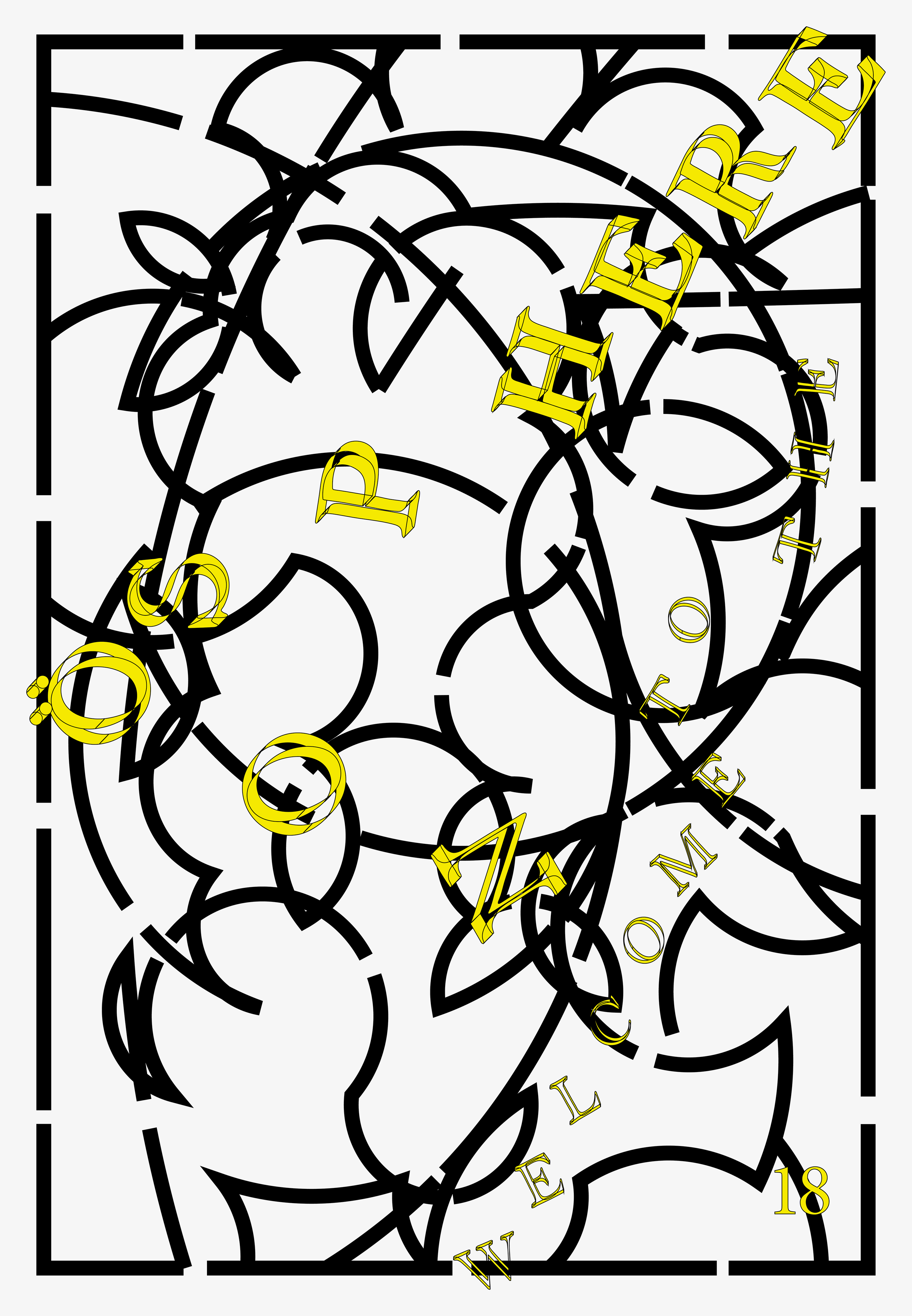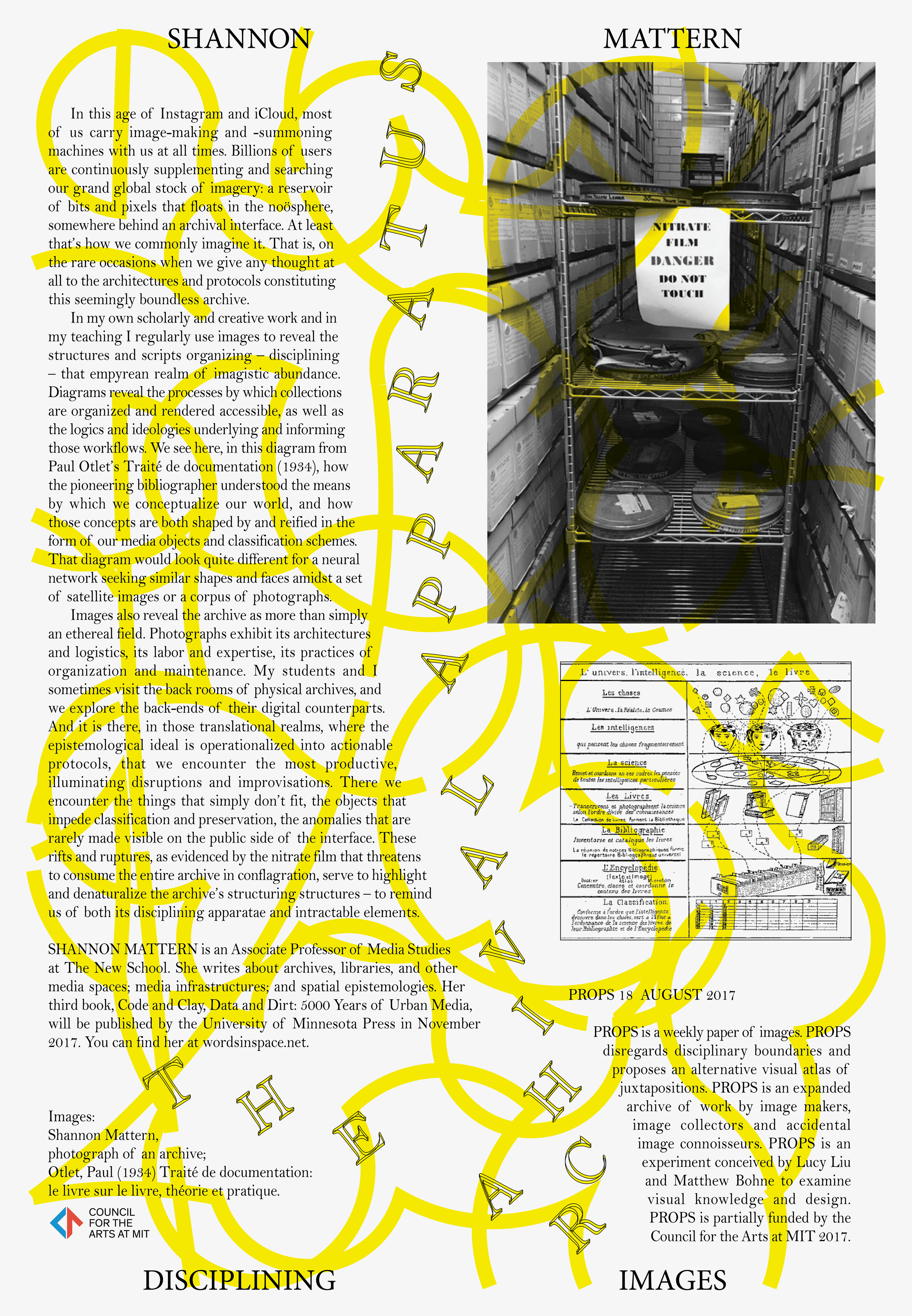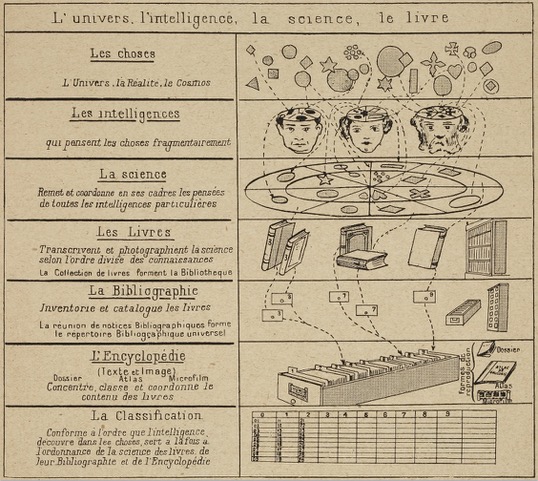

18 DISCIPLINING IMAGES - THE ARCHIVAL APPARATUS
SHANNON MATTERN︎︎︎
In this age of Instagram and iCloud, most of us carry image-making and -summoning machines with us at all times. Billions of users are continuously supplementing and searching our grand global stock of imagery: a reservoir of bits and pixels that floats in the noösphere, somewhere behind an archival interface. At least that’s how we commonly imagine it. That is, on the rare occasions when we give any thought at all to the architectures and protocols constituting this seemingly boundless archive.
In my own scholarly and creative work and in my teaching I regularly use images to reveal the structures and scripts organizing – disciplining – that empyrean realm of imagistic abundance. Diagrams reveal the processes by which collections are organized and rendered accessible, as well as the logics and ideologies underlying and informing those workflows. We see here, in this diagram from![]() , how the pioneering bibliographer understood the means by which we conceptualize our world, and how those concepts are both shaped by and reified in the form of our media objects and classification schemes. That diagram would look quite different for a neural network seeking similar shapes and faces amidst a set of satellite images or a corpus of photographs.
, how the pioneering bibliographer understood the means by which we conceptualize our world, and how those concepts are both shaped by and reified in the form of our media objects and classification schemes. That diagram would look quite different for a neural network seeking similar shapes and faces amidst a set of satellite images or a corpus of photographs.
In this age of Instagram and iCloud, most of us carry image-making and -summoning machines with us at all times. Billions of users are continuously supplementing and searching our grand global stock of imagery: a reservoir of bits and pixels that floats in the noösphere, somewhere behind an archival interface. At least that’s how we commonly imagine it. That is, on the rare occasions when we give any thought at all to the architectures and protocols constituting this seemingly boundless archive.
In my own scholarly and creative work and in my teaching I regularly use images to reveal the structures and scripts organizing – disciplining – that empyrean realm of imagistic abundance. Diagrams reveal the processes by which collections are organized and rendered accessible, as well as the logics and ideologies underlying and informing those workflows. We see here, in this diagram from
Paul Otlet’s Traité de documentation (1934)

Images also reveal the archive as more than simply an ethereal field. Photographs exhibit its architectures and logistics, its labor and expertise, its practices of organization and maintenance. My students and I sometimes visit the back rooms of physical archives, and we explore the back-ends of their digital counterparts. And it is there, in those translational realms, where the epistemological ideal is operationalized into actionable protocols, that we encounter the most productive, illuminating disruptions and improvisations. There we encounter the things that simply don’t fit, the objects that impede classification and preservation, the anomalies that are rarely made visible on the public side of the interface. These rifts and ruptures, as evidenced by the nitrate film that threatens to consume the entire archive in conflagration, serve to highlight and denaturalize the archive’s structuring structures – to remind us of both its disciplining apparatae and intractable elements.
SHANNON MATTERN︎︎︎ is an Associate Professor of Media Studies at The New School. She writes about archives, libraries, and other media spaces; media infrastructures; and spatial epistemologies. Her third book, Code and Clay, Data and Dirt: 5000 Years of Urban Media, will be published by the University of Minnesota Press in November 2017. You can find her at wordsinspace.net.